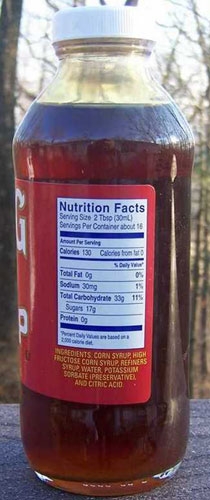Posts Tagged: Corn
USDA official promotes renewable fuel infrastructure
A USDA official was in Oakland yesterday to promote the development of renewable fuel infrastructure in the United States, according to a news release from Propel Fuels. The federal agency plans to fund the build-out of 10,000 renewable fuel pumps across the nation in the next five years.
Judith Canales, administrator of USDA's Rural Business and Cooperative Programs, spoke at a press conference held at a gas station where customers can purchase E85 Flex Fuel and biodiesel from Redwood City-based Propel Fuels.
A story produced by KGO-TV in San Francisco said high fuel prices came at a perfect time for Propel, whose biofuel business is booming.
"What we are trying to do is focus on fuels that are domestically made, and fuels that could contribute to American jobs and reduce our dependence on foreign oil," Propel executive Jim Iacoponi told KGO reporter Wayne Freedman.
Most American-made biofuel is produced with corn. Corn is high in starch, but low in sugars, making it less efficient for making fuel than foreign sugar cane. But high U.S. tariffs make corn a viable alternative.
In the news story, UC Berkeley physicist Richard Muller attributed some of the interest in corn to presidential politics.
"Well, it's Iowa," Muller said. "In order to win the Iowa caucuses go to Iowa and promise they will support corn ethanol."
At the news conference, Canales said corn will only be part of the solution.
In the U.S., there are more than 20 million vehicles (more than 1 million of those in California) capable of running on renewable fuels, but the majority do not have access to these fuels. Propel has plans to build 75 additional stations in the Bay Area and Sacramento, as well as in new markets later this year, the news release said.

USDA's Judith Canales fuels a CalTrans vehicle that runs on biofuel.
Sweet corn is summer treasure
Eating crispy sweet corn the same day it’s picked is one of the best reasons to stop at a roadside farm stand. Fresh corn-on-the-cob’s notes of honey and vegetal cream barely resemble the starchy, grainy flavor of processed corn.
Demonstrating fresh sweet corn’s esteem in the southern San Joaquin Valley, the Visalia Times-Delta ran a feature yesterday about First Fruits Sweet Corn in Hanford where customers can buy the proprietors’ secret corn variety until the end of September.
Reporter Hillary Meeks contacted UC Cooperative Extension agronomy farm advisor Carol Frate for perspective on local corn production. She said cultivating sweet corn takes more time and work than field corn grown for silage. For example, checking each ear for worms is labor intensive, but many consumers find it distasteful to find one themselves (even though they are harmless. Just cut off that part of the ear).
Though she probably won’t say cooking fresh vegetables is in her area of expertise, Frate shared with the reporter how she prepares corn.
“Either she steams it for four minutes or her husband covers it in garlic butter and grills it until it has grill marks on all sides,” the story said.
Sugar = corn syrup? UC Davis to weigh in
Consumers are confused about their sweeteners. Media have reported that high fructose corn syrup is no different from cane sugar, and they have publicized studies that show the corn-based sweetener is more harmful to good health than sweetener extracted from sugar cane and sugar beets. Connecttristates.com tried to sort out the facts:
- Both sweeteners are made up of roughly equal amounts of glucose and fructose. (New York University nutrition professor quoted in the New York Times.)
- Chemically speaking, high fructose corn syrup is just sugar with an image problem. (From a CBS News report.)
- A 2004 paper suggested a link between soft drinks sweetened with high fructose corn syrup to the obesity epidemic. (No citation.)
- The authors of above-mentioned paper "didn't have one shred of evidence to back up their theory. They eventually recanted and they realized that HFCS and sugar are virtually the same thing. (Michael Jacobson, Center for Science in the Public Interest.)
- The addition of high fructose corn syrup into research subjects' diets increases the severity of liver disease...particularly the degree of liver scarring or fibrosis. (Manal Abdelmalek, Duke University Medical Center.)
- It's fructose that we're worried about. There's too much of it in our diet so we ought to be eating less of sugars generally. (Marian Nestle, Department of Nutrition, Food Studies and Public Health at New York University.)
The column said scientists at UC Davis are conducting a long-term study to understand whether human bodies metabolize high fructose corn syrup differently than table sugar. Results are expected by the end of this summer
In the meantime, the writer says, overuse of either high fructose corn syrup or cane sugar is not a healthy practice.

Sweetened with corn syrup.
Bee's new garden writer uses UCCE sources
Not only did the Fresno Bee lose veteran ag reporter Dennis Pollock to its recent buyout cuts, the paper's garden reporter, Mzong Xiong, decided to take the buyout and continue her maternity leave indefinitely.
But it hasn't taken long for her replacement to find UC Cooperative Extension. Margaret Slaby, who together with columnist Mary Lu Aguirre are now covering the garden beat, wrote a charming piece about heriloom corn this week that included quotes from two Tulare County UCCE advisors.
The story centers on Gary Jones of Tollhouse, who is growing corn with kernals ranging from red, purple and pink to blue, black and teal, the article said. Small farm advisor Manuel Jimenez noted in the article the reasons why such varieties are less popular with commerical growers.
Modern field corn (for animal feed, corn meal and flour) and sweet corn are more disease-resistant, store better, and the ears tend to be more uniform in size than heirloom corn, Slaby paraphrased Jimenez.
Slaby also gave Carol Frate's self-evident assessment about the term "heirloom corn." Varieties are considerd "heirloom," according to Frate, when they've been around a long time. There are thousands of varieties of corn in all colors. Some varieties -- but not all -- are heirloom.
Frate and Jimenez were also credited in the story for providing information on planting and growing corn.
Incidentally, in a conversation I had today with the Fresno Bee business editor, Mike Nemeth, I learned that agriculture will be covered, for the most part, by Bob Rodriguez. A few years ago, Bob was dedicated to the ag beat, but then was reassigned to cover mainly energy and workplace issues. Nemeth said his business staff consists of four reporters, down from seven when he took on his post three years ago.


